45. The Roman and Byzantine Baby Sewers
Archaeology is a way to study the human past—our past. Archaeologists have been discovering ancient sites that give humanity a more detailed sense of where we came from, what our ancestors were like, and what they’ve left behind for us to find. The Greek historian Herodotus was one of the first archaeologists in history, and is commonly referred to as the ‘Father of History’. A lot of time has passed since the fifth century BC and Herodotus has inspired many archaeologists to branch out and search for the lost artifacts of our pasts.
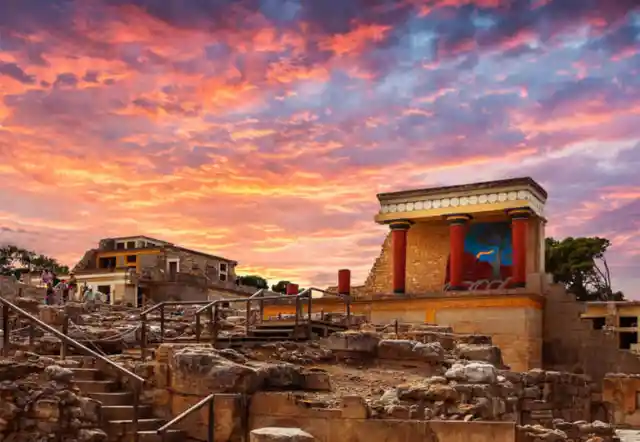
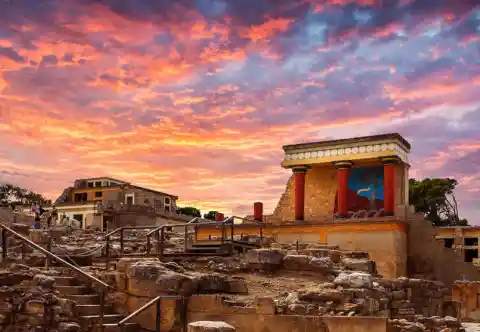
Some of the things discovered on this list are quite shocking, especially for the time period in which they were created. A few of them are still just as mysterious as they were when first discovered, while others have been identified, studied, and put on display for everyone to enjoy. This list of strange sites will take you all around the world and might give you more questions than answers, which is what makes the study of ancient archaeology so fascinating. Don’t be surprised if you find things you only thought existed in science fiction movies…
Bath houses are nothing of note in Roman or Byzantine archaeology. What is unique is what was found in the sewers below. Baby bones, a great deal of them, were strewn through the sewers below the bath houses. This is not an unprecedented practice, but one that is surprising for Romans.
44. Rosetta Stone
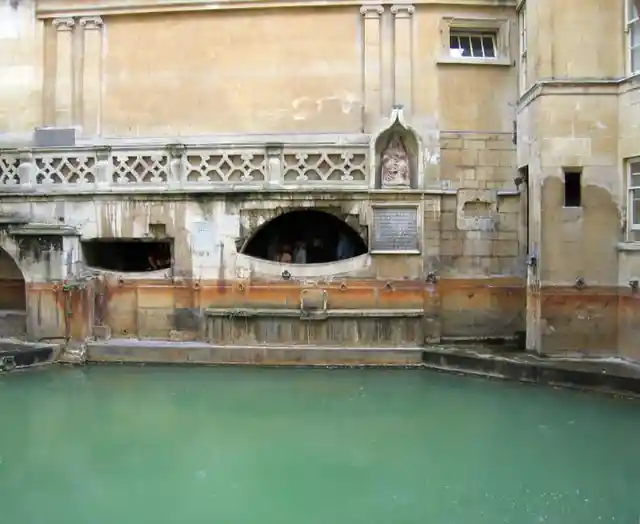
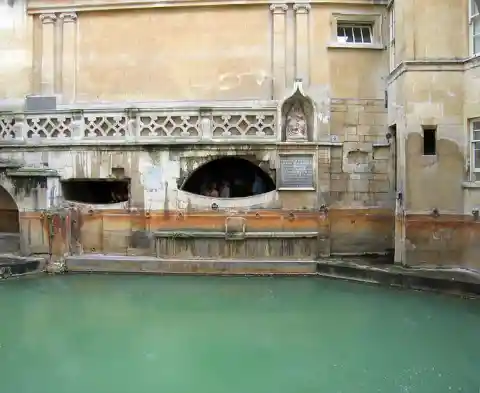
Spartans were known to dispose of babies that they felt were too weak to grow to the strength that would be required in their warlike practices, but Romans were not included in that particular practice until recently. The exact reasons for the bones are still unclear, but it leads to a shocking revelation about the time period.
In 1799 a French soldier found what is now known as the Rosetta Stone in the sands of Egypt. It has become a household name, with language learning software, Rosetta Stone, naming itself after it. The stone is one of the most important artifacts to be found as it made it possible for us to understand Egyptian hieroglyphics.
43. Rapa Nui
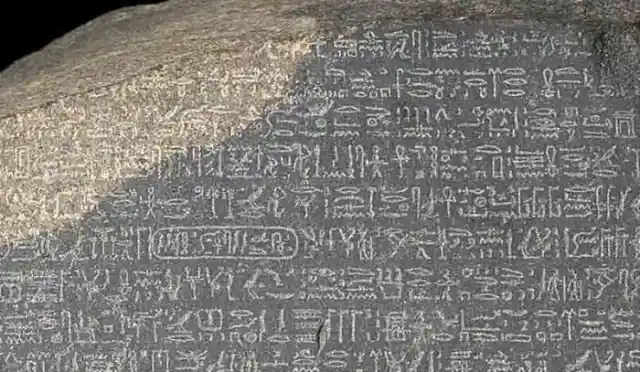
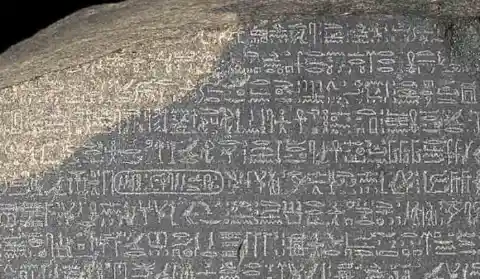
The larger stone was a decree issued by King Ptolemy V somewhere around 200 BC and was written in three languages. Egyptian hieroglyphics, Ancient Greek and Demotic Script.
Better known as the Easter Islands, the location is so remote that it is just as shocking that humans were able to reach and settle the island as it is that they were able to construct the famous stone carvings around it. Little is known of the reason they were built or what the people on the island were like, but it is a well-preserved mystery that continues to this day.
42. Piri Reis Map
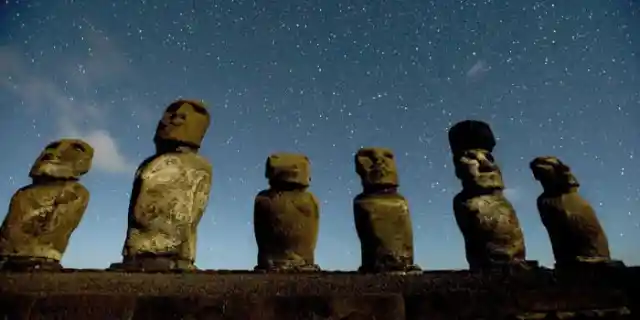
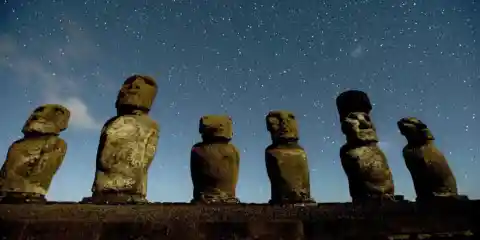
Created sometime in the early 1500s, the Piri Reis Map, named after the cartographer that created it, is an amazingly accurate map of the coastlines of South America, Europe, and Africa. It seems that it was constructed using fragments from dozens of other maps.
41. Dead Sea Scrolls
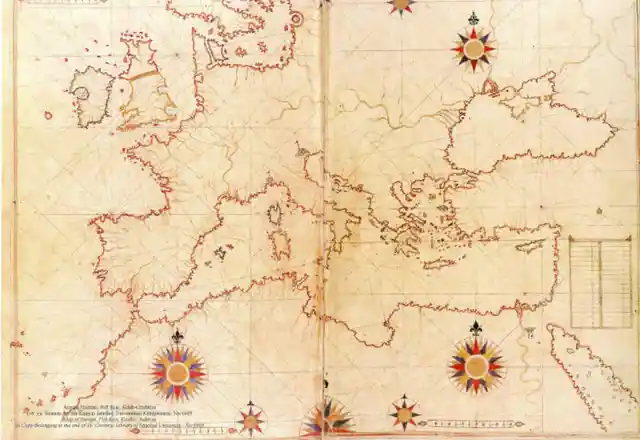
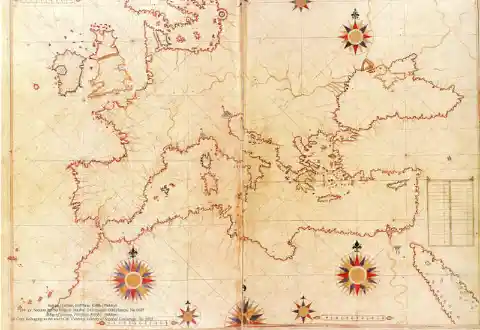
One of the most important biblical discoveries of all time arrived in the 1950s. With nearly a thousand pages of manuscripts written in Greek, Hebrew, and Aramaic, the existence of additional documents to the Bible has been all but proven.
40. Mount Own Moa


It is estimated that the scrolls date back to around 700 years around the birth of Jesus Christ and reference highly symbolic or esoteric ideas.
Discovered in 1986, deep in the cave system of Mount Own in New Zealand, the huge claw looked as if it had been from an animal that had died recently. However, it turns out that it is an incredibly well-preserved claw of an Upland Moa, which was a prehistoric bird of great size.
39. Sacsayhuaman

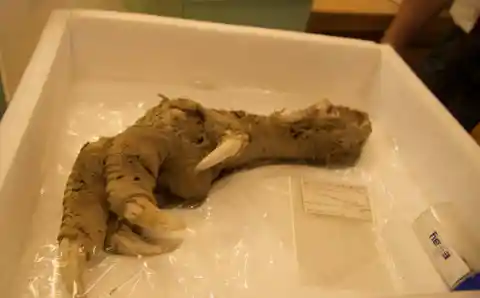
A true engineering marvel, the Sacsayhuaman is a walled complex outside of Cusco, Peru which used to be part of the Incan Empire and likely its capital. The walls aren’t the most amazing part of the construction, though, it is how well the slabs that build the wall fit together.
38. Baghdad Battery
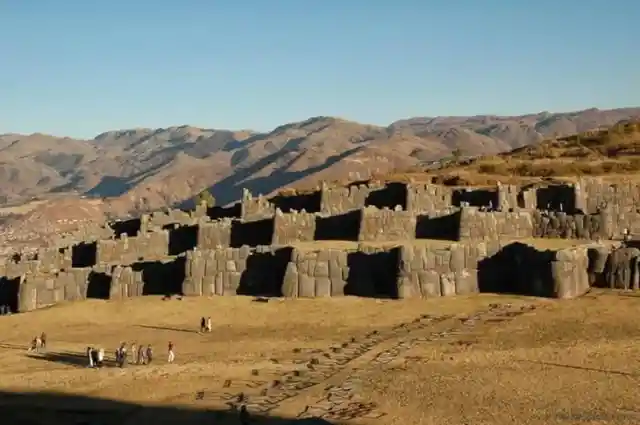
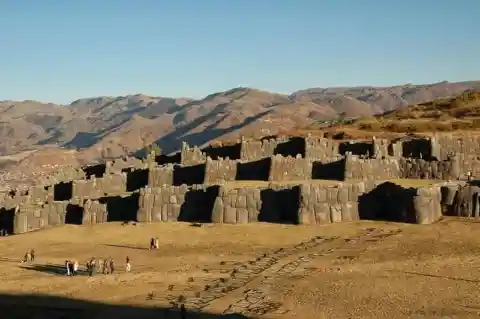
There is no room at all between each slab, which may be partly due to age and settling along with erosion, but that takes little away from the incredible engineering the Incan’s were able to perform.
One of the most confusing and amazing discoveries in modern times is the Baghdad Battery. These batteries were built in a way that could actually create electricity. The battery is so famous that the Mythbusters attempted to recreate them.
37. Pompeii
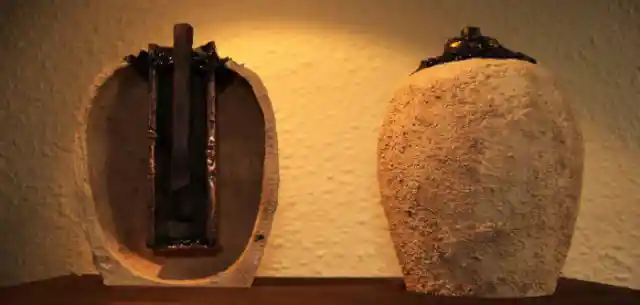
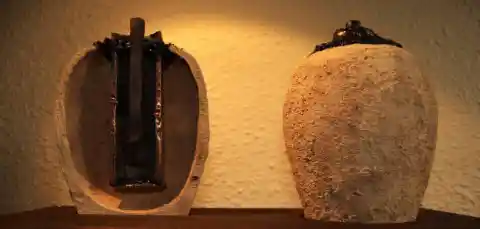
Their findings showed that 10 batteries put together would only create about 4.5 volts, which is nothing compared to modern batteries, but enough to make it plausible that these were used to power something.
In 79 AD the ancient Roman city of Pompeii was destroyed and buried by an eruption of Mount Vesuvius. The eruption was such a major event that it was chronicled in ancient historical documents, something that would have required a large enough impact to be noticed at a distance. In 1738, a military engineer with the Spanish army, Rocque Joaquin de Alcubierre, found the remains of Herculaneum. Herculaneum was a nearby city that suffered a very similar fate.
36. The Cave of Altamira
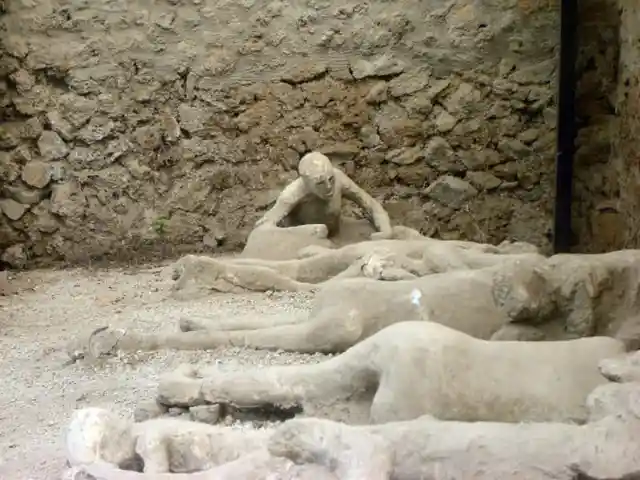
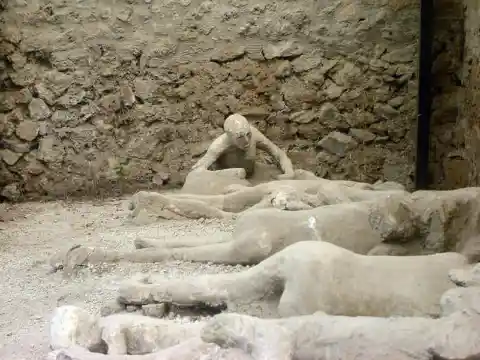
It took almost a decade after that discovery for Giuseppe Fiorelli to find Pompeii. Several artifacts were found that pointed to a sexual and erotic association. In addition, graffiti found on the city walls read “City of Sodom and Gomorrah,” which lead many devout Christians to believe this proof of the story of the cities being struck down by God’s fury.
Looking at ancient cave paintings leads us to expect a certain type of image. Generally, these images are very basic at best, something you would expect a three-year-old to draw today. Upon the discovery of the paintings in the Altamaria by Marcelino Sanz de Sautuola (though the story goes that his nine-year-old daughter pointed his attention to the ceiling where the paintings are found) the scientific community became heated.
35. Knossos
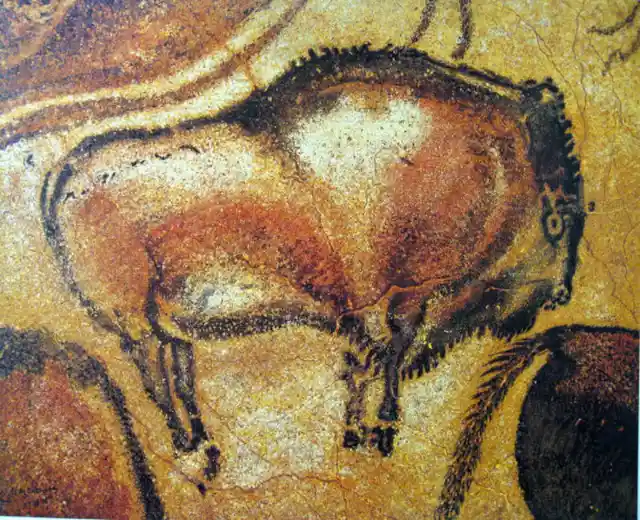
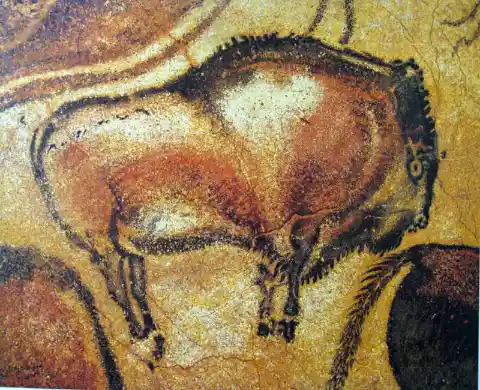
Many did not believe such detailed paintings were possible by pre-historic man, but dating methods lead to proof that these were paintings from the Paleolithic period which completely changed our views of how advanced the people of the time were.
Most know of the legend of the Minotaur’s Labrinth, and Knossos seems to be the most likely home of where the legend started. Knossos was discovered in 1878 by Arthur Evans and Minos Kalokairinos and had several references to ancient Roman texts and coins.
34. The Pilate Stone


The illustrations of a raging bull at the entrance of the city lead to the belief that this is where the Minotaur’s legend began.
Likely the most authentic proof of the existence of Pontius Pilate, the Pilate Stone was discovered in the Caesarea region of Judea. Pontius Pilate has a big role in the story of Jesus and throughout parts of the Bible, but before the stone was discovered it was something to be taken as faith. The stone appeared to be used as part of a staircase for an Ancient Roman theater.
33. Olduvai Gorge
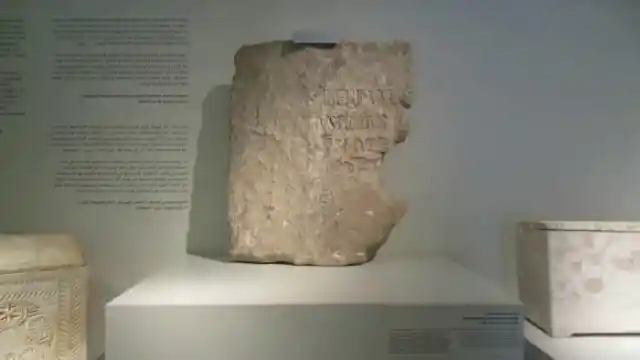
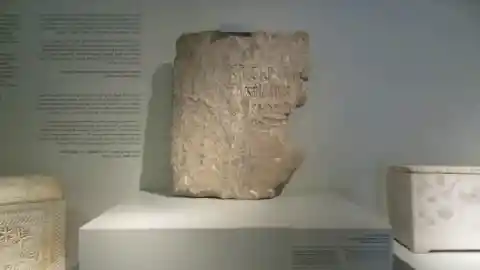
Dr. Antonio Frova and his team found the stone with an inscription that translates to something along the lines of “To the Divine Augusti Tiberieum … Pontius Pilate … prefect of Judea … has dedicated .” While it is difficult to prove many of the stories in the bible, the Pilate Stone is considered evidence of Pilate’s existence.
One of the most important discoveries in history, the Olduvai Gorge in Tanzania runs across steep ravines for nearly 30 miles. What makes the site so important is the age. At nearly 2 million years old, it shows evidence of human-like dwellers. Found on the site are tools, evolutionary evidence of the human race, and signs of scavenging.
32. Hagar Qim
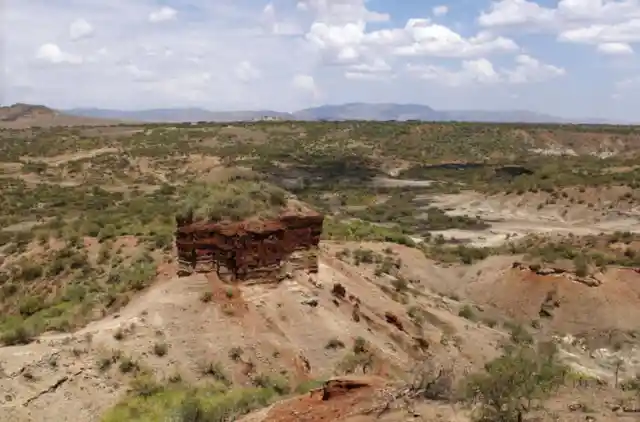
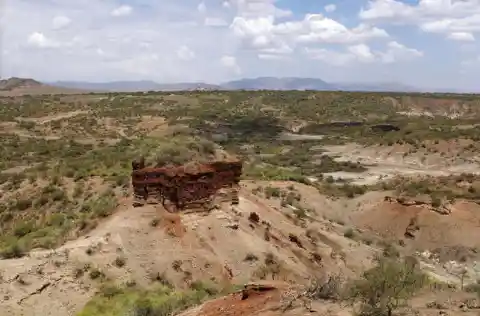
The scavenging shows animal bones with teeth marks rather than hunting weapons. There are also rock-art samples that lead to more evidence, making this one of the largest archaeological sites in the world.
Another ancient discovery and one that was a shock to the world when discovered is the Hagar Qim, dated to 3600-3200 BC. This predates the oldest Egyptian pyramids by almost 1000 years by some accounts. The free-standing structures are part of the UNESCO heritage sites and predate Stonehenge, which is a much more famous discovery.
31. Roman Dodecahedra
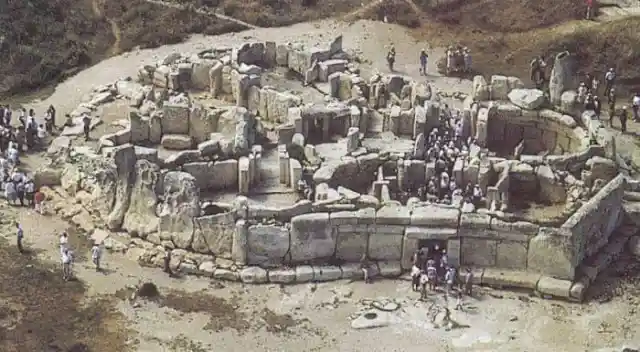
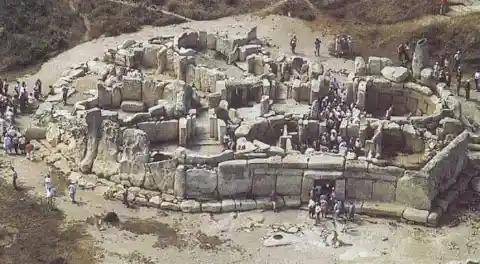
In the early part of the 19th century, these structures were discovered. Vere Gordon Chide, a Professor of Prehistoric European Archaeology had this to say about the Hagar Qin; “I have been visiting the prehistoric ruins all-round the Mediterranean, from Mesopotamia to Egypt, Greece and Switzerland, but I have nowhere seen a place as old as this one.”
A discovery that is still a mystery to this day, the Roman Dodecahedrons confound archaeologists. There seems to be no evidence of what they were used for. Some say they were a tool for distance measuring while others expect they were decorations, possibly candle holders, but the one thing that is known is that they were not rare.
Found in Hungary, Germany, France and Wales, they were scattered across Europe and have been dated back to the 100 and 200 CE. The items are made with twelve flat sides, pentagonal each, and varying hole sizes on each face.
30. Stone Spears
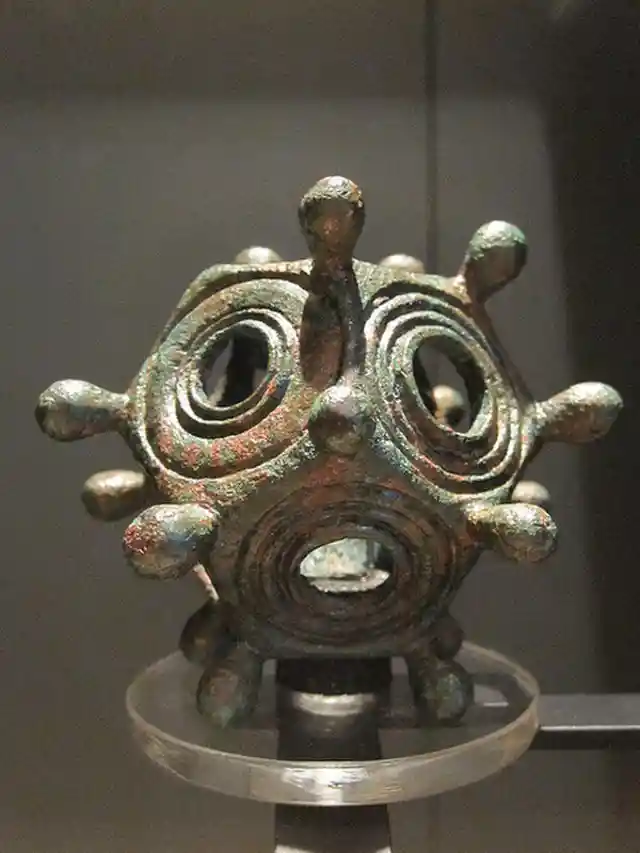
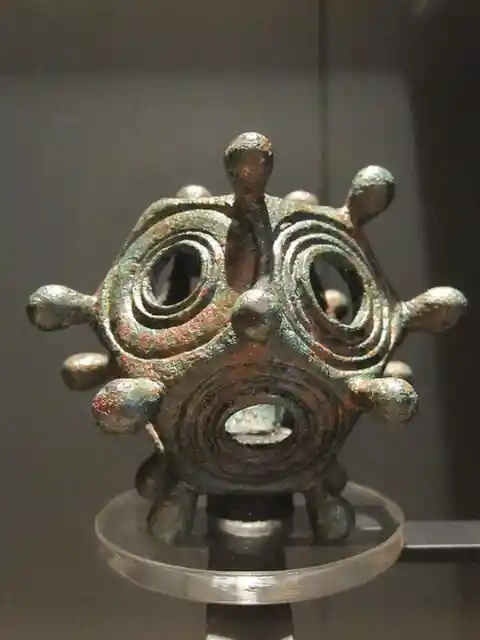
The mystery remains to this day… maybe they were toys or dice? No one is sure yet, and may never be.
While many discoveries on this list are fairly unknown, stone spears seem to be somewhat boring in comparison. That doesn’t take away from their importance, though. The heads were found in South Africa and dated back to be almost 200,000 years old.
29. Sea of Galilee Boat
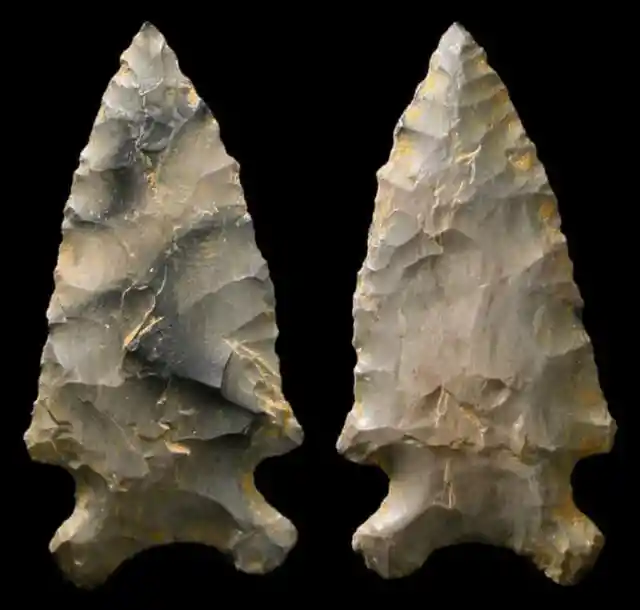
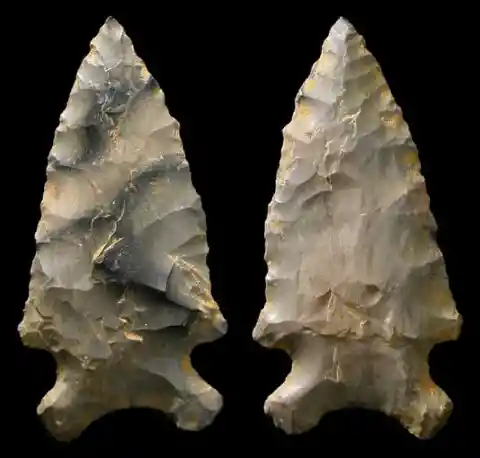
When found, it completely changed the history of mankind as a hunter. Fire was discovered almost one million years ago, so this shows that man has been cooking for much longer than we ever expected.
An important discovery for archaeologists and Christians alike, the Sea of Galilee boat dates back to the first century CE. This would have been around the time that Jesus walked the Earth and is an example of the type of boat that was used by Jesus and his disciples. It was originally found by two brothers, Moshe and Yuval Lufan, during a drought that lowered the water level of the lake in which they fished. Immediately after, authorities sent out of a team of archaeologists to investigate the finding.
28. Marcahuasi
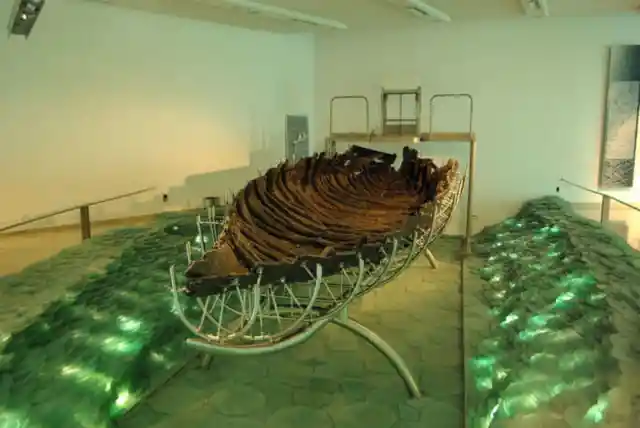
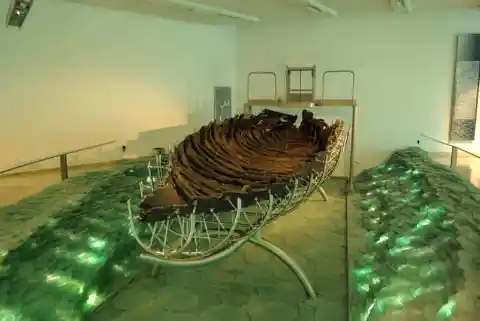
At 27 feet long and 7.5 feet wide, the boat was held in a chemical bath for 7 years to prevent further erosion. It is now displayed in the Yigal Allon Museum in Kibbutz Ginosar.
Marcahuasi has been a controversial and remarkable discovery since it was found in 1952. A plateau in the Andes Mountains that rises over the Rimac River, it was discovered by Daniel Ruzo. While the hundreds of stone figures are proof that something unique exists in this area, some of the controversies come from the claim that the stones are carved to resemble human faces and animals – which can be as tall as 90 feet. The human brain has the ability to see faces in almost anything, which led to some controversy about the discovery, claiming it was simply natural erosion.
27. Andrewsarchus
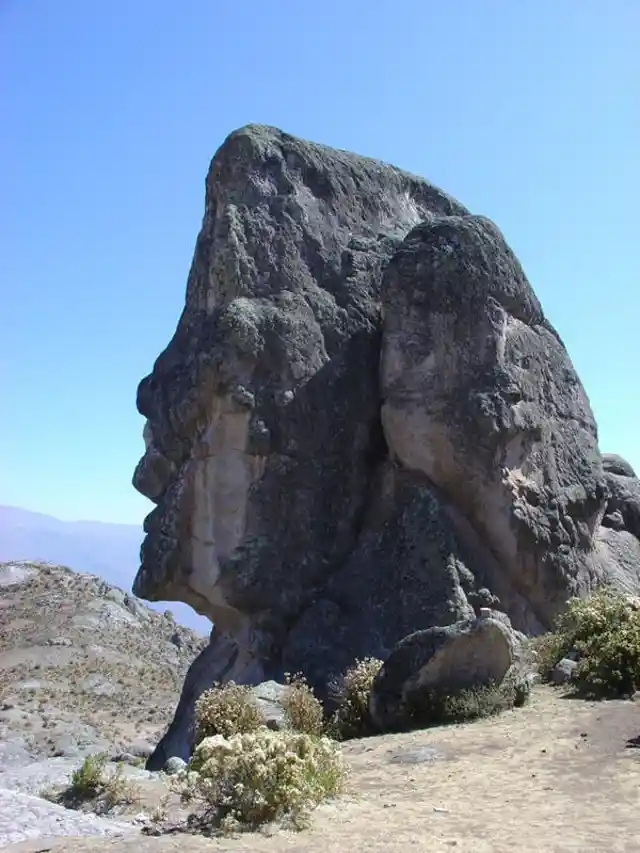
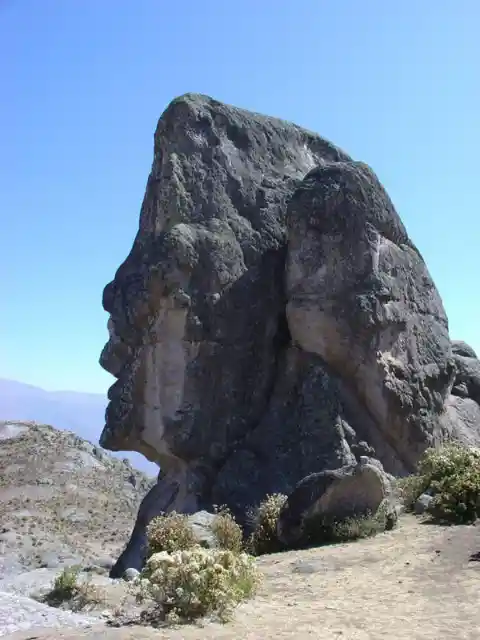
Daniel Ruzo claimed that the sculptures were made by a culture named the Masma (or Fourth Humanity) almost 10,000 years ago. He also stated that the Earth suffers disruptions that could end all living beings about every 8,500 years, and this was a site selected to preserve all human knowledge.
A rare discovery in Mongolia led to a new understanding of what may have existed around 45 to 36 million years ago. The Andrewsarchus, named after Roy Chapman Andrews an American explorer and Director of the Amercian Museum of Natural History. It was Andrews and his team that discovered the giant skull of a yet to be identified animal in 1923 or 1924. The Andrewsarchus’ skull is all that was found, no lower jaw or any other part of its body.
26. Headless Vikings of Dorset
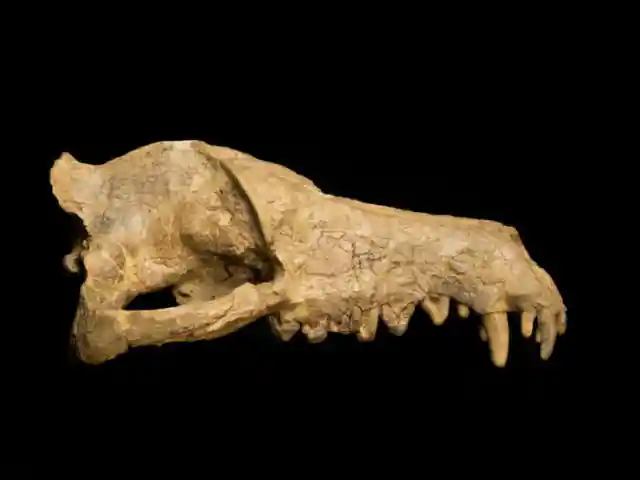
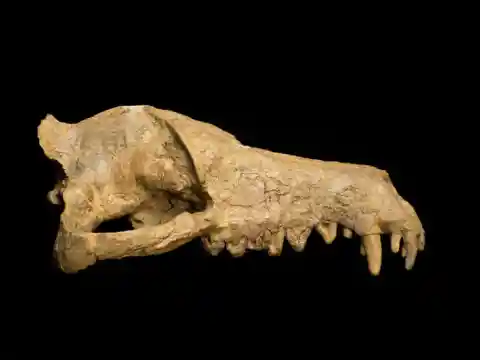
The mammal is estimated to be 2,200 pounds but could have weight as much as 4,000 pounds. Little is known about how the animal lived or what it ate, but it is estimated that it had the strongest jaw of any land mammal every to walk the Earth.
It is still unclear what this discovery means. While digging for a railroad in Dorset, workers found a small group of beheaded Viking warrior bones. It was originally thought that they were killed during a raid, but the beheadings were clean and done from the front, which was not what was expected.
25. Stone Spheres


It is still unclear what happened in the area to this day.
Costa Rica’s Isla del Caño, and its Diquís Delta is home to some very unique and awe-inspiring stone spheres. They are made of a stone that is formed by blistering magma, to then be formed into perfectly smooth spheres. The Chibchan people who used to inhabit Costa Rica are the only ones who truly knew the purpose for these stones, but some suggest they could have been used to mark the homes of Chiefs.
24. Antikythera Mechanism


In June of 2014 these stones were officially recognized as a World Heritage Site–adding to it’s already major significance to the area.
In July, of 1901 archaeologists discovered the Antikythera Mechanism in a Greek shipwreck. The mechanism hasn’t been fully discovered as far as its purposes and uses, but what we do know is that it’s about 2,000 years old. The intricate gears interlock and have mysterious inscriptions.
23. The Terracotta Army of Emperor Qin Shi Huang
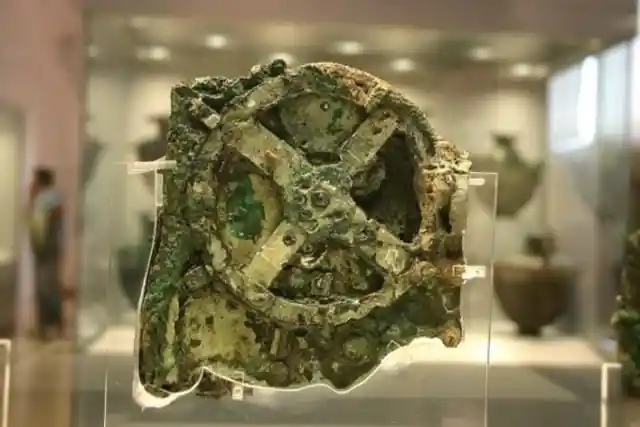
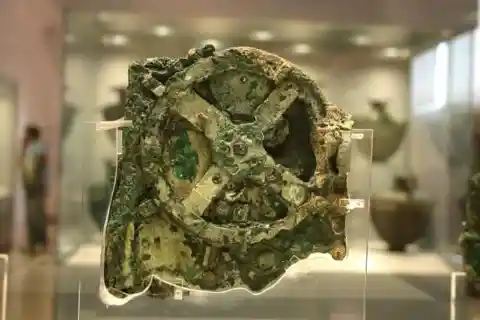
One purpose of the device is to act as an astrological calendar, and there must have been a very important reason because this was one extremely sophisticated machine for its time.
Some of the best archaeological sites in history have been accidentally found–including the terracotta army found in China’s Shaanxi province. Farmers in the area accidentally discovered this LIFE SIZE army, which must have been quite a surprise. The army was created to defend the emperor in his afterlife, and yet no one has ever set foot in the tomb that he lies in.
22. Stonehenge
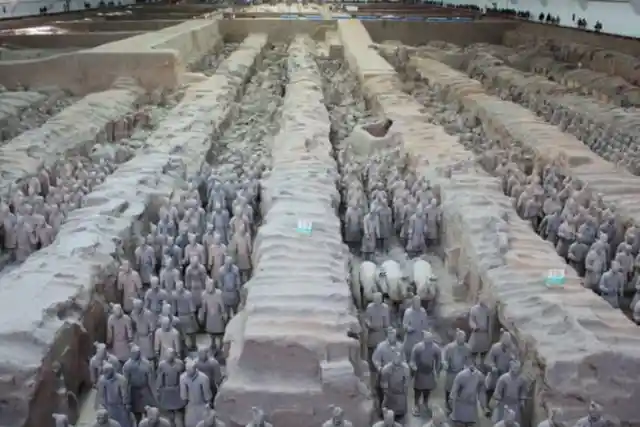
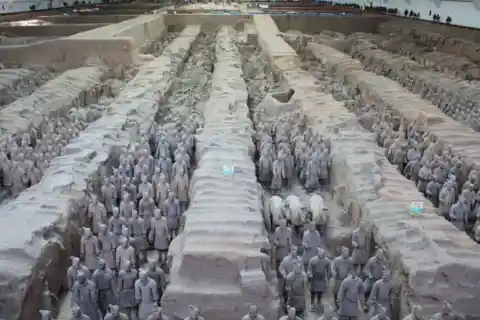
Scientists do have the ancient plans for the tomb, however, alluding that this is one of the most lavish burial sites in history.
Stonehenge had to make its way on this list because it’s one of the most famous sites on Earth. Wiltshire, England is where this prehistoric monument resides and little is actually known about its origins. Its location is quite important, as it’s the densest area of monuments in all of England–including some burial grounds which is what some experts believe it was created for.
21. Ancient Animal Traps
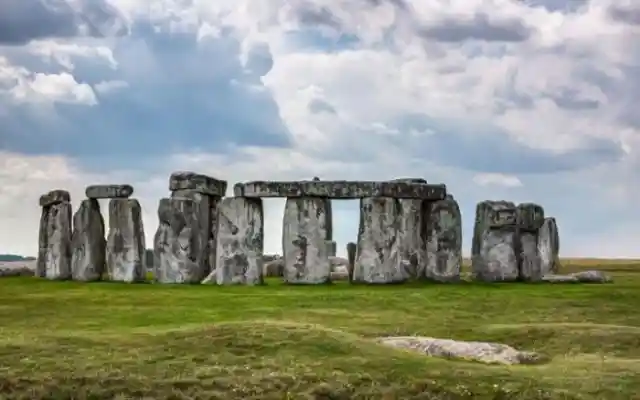
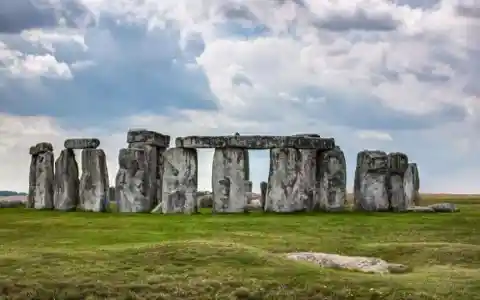
Radiocarbon dating dates the massive stones to around 3,000 BC.
Among some of the crazy things witnessed while in flight were these enormous rocks in line formation across deserts in Jordan, Israel, and Egypt. British pilots in the 20th century witnessed these giant chain like lines of rocks, and they were later identified as ancient animal traps.
20. The Nazca Lines
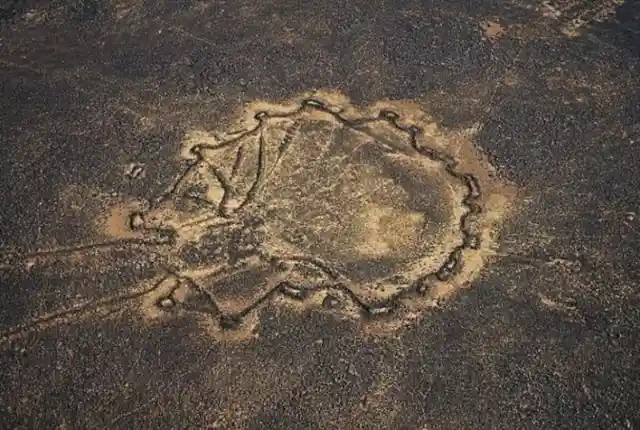
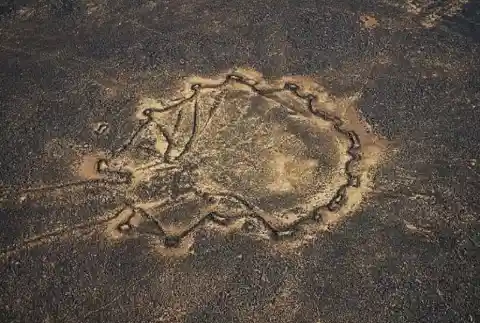
They essentially created large funnels to trap and hunt large game, and they must have had extensive knowledge of what they were hunting in order to create these masterpieces.
The Nazca lines are some of the most interesting and gigantic monuments that create shapes that can be seen from the sky. The Nazca were a culture pre-Aztec that created these enormous shapes of animals, human-like figures, and plants. The red surface of the ground was removed which revealed a lighter shade underneath, and it created the long-lasting figures.
19. The Great Pyramids
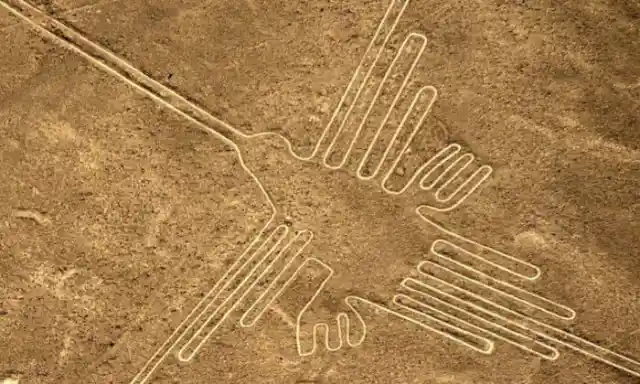
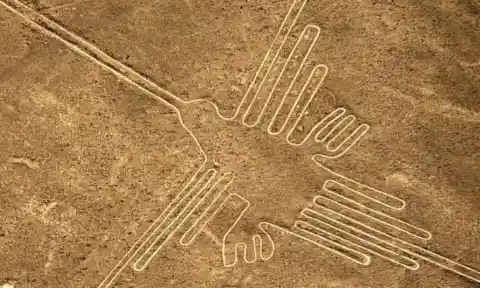
Some conspiracy theorists attribute these to ancient astronauts, but archaeologists say they were probably ritualistic communication mechanisms for the local people.
There is an estimated total of 138 pyramids in all of Egypt, and the most famous of them are the three on the outskirts of Cairo at Giza; they are some of the largest ever built. New tunnels are being discovered every year within the walls of these pyramids, and archaeologists believe that the shape was inspired by the belief that the Earth was created from the primordial mound.
18. The Shroud Of Turin


The Shroud of Turin is famously known as the shroud of Jesus Christ because of the face that resembles what people assume he looked like. The Catholic church acknowledged the shroud’s existence in 1353 AD, and there have been many stories told about it before and after that date. There is huge debate around whether this shroud was truly that of Jesus or a fake, and carbon dating did little to settle that.
17. Gobekli Tepe
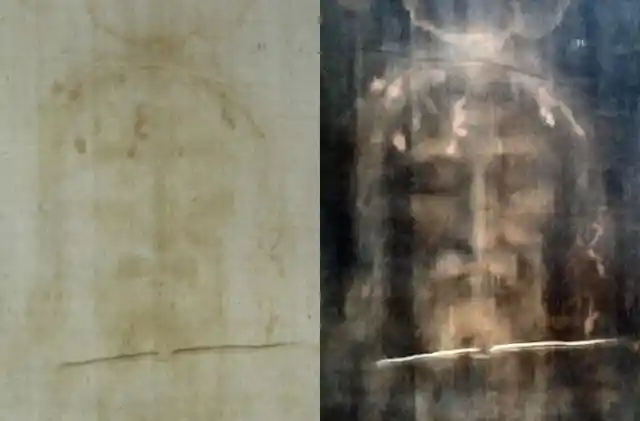
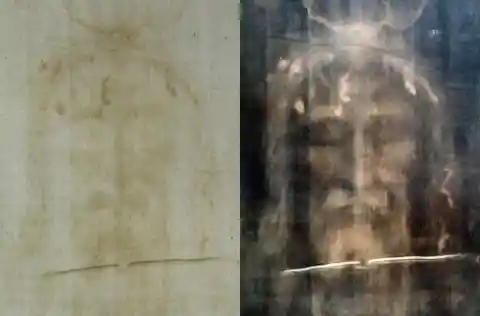
Some of the cloth has been carbon tested to be created between 1260-1390 AD, which some argue is part of a piece of patchwork, not the original shroud.
In the Southeastern Anatolia region of Turkey, is this ancient masterpiece. The German archeologists that unearthed this site in 1996 believed it to be neolithic sanctuaries, but the true function remains unknown.
16. The Copper Scroll
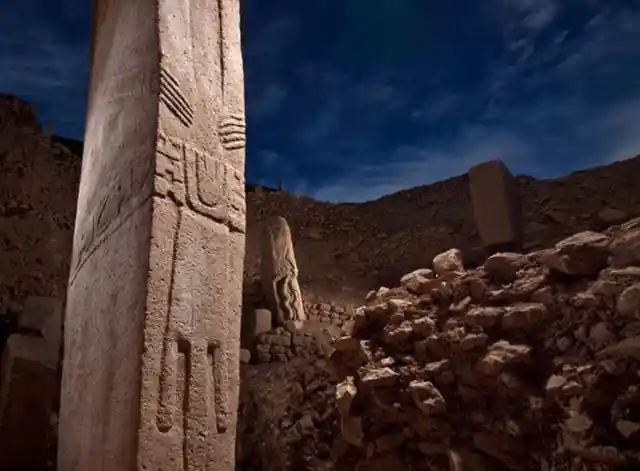
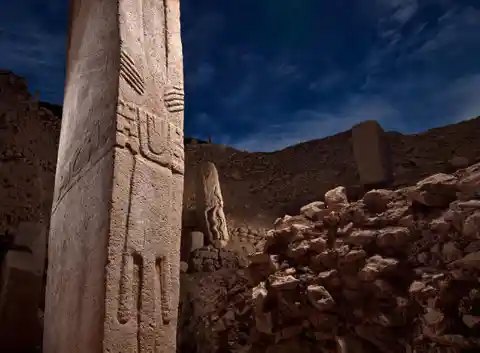
The prehistoric people that built these huge slabs and pillars must have been advanced for their time because this site is shockingly 11,000 years old.
Between 1946-1956 the Dead Sea Scrolls, a collection of 981 texts in the caves of Qumran. The copper scroll, in particular, is said to describe copious amounts of gold and silver–yet no one knows where it may be. There is some confusion about the date of the scroll, but multiple archaeologists agree on around 70 CE.
15. King Tut
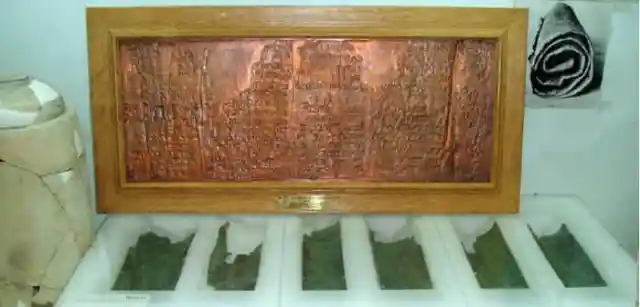
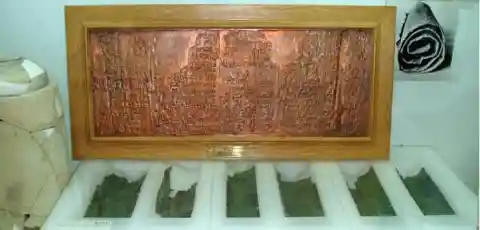
It’s pretty fascinating that there might be a lost treasure hidden in the world.
King Tut was found in 1922 by a British archaeologist and many rumors about the king’s death and tomb have inspired enchanting stories. What’s most interesting and strange about this discovery is that after his death, mummification, and his tomb being sealed–he caught fire.
14. The Ark of The Covenant
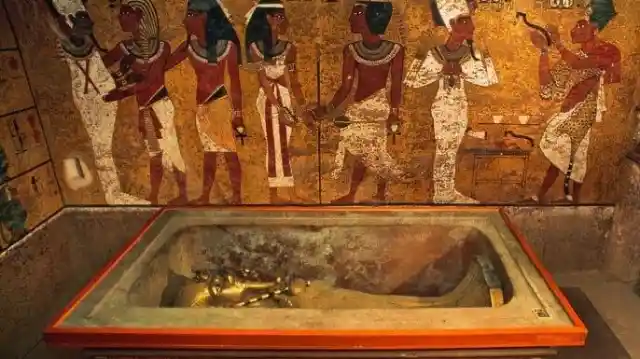
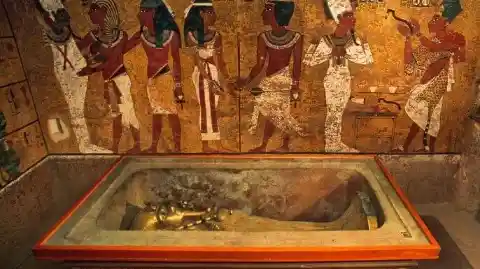
Researchers think that the fire was due to a botched embalming job, probably due to a rushed burial; whatever the case the mummy of King Tut may not be the only one meant for that tomb.
The Ark of the Covenant is essentially an extremely religious gold encrusted wooden box, that contains the 10 commandments. There is one unique thing about this discovery–it hasn’t PHYSICALLY been discovered…well unless you’re an Indiana Jones fan.
13. Voynich Manuscript


Hopefully one day the general public will be able to gaze upon this historic piece.
Probably one of the most interesting books in history (perhaps because no one can actually translate it) is the Voynich manuscript. Its pages are filled with pictures ranging from naked women to medicinal remedies.
12. The Hobbits


Researchers believe that it’s dated about 600 years and was most likely written in central Europe; probably used as a nature manual.
In 2003 the world, or rather the researchers and scientists on Flores island, discovered tiny human skulls they quickly named the hobbits. Many Lord Of The Rings fans can appreciate the name, and everyone else just needs to know that the skulls discovered were tiny versions of the modern human we see today.
11. Sanxingdui
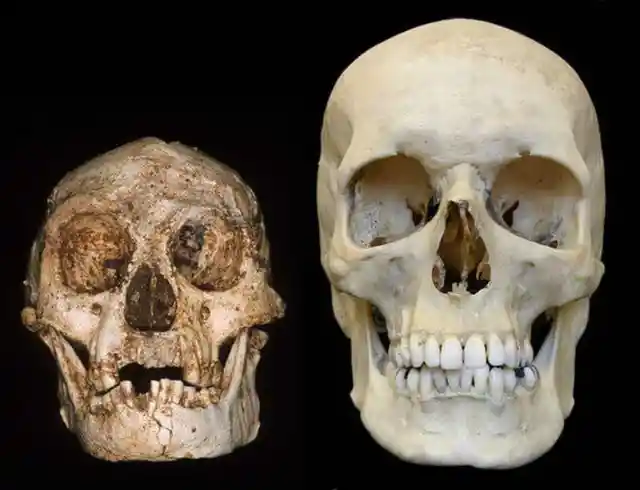
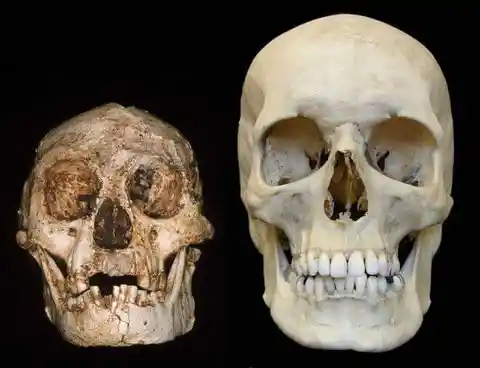
The first tiny skull was found on a woman of about 3.5 feet tall.
The Sanxingdui is an amazing archeological site that has been discovered, not once–but twice. The first time in 1929 and again in 1986, the site is located in what is current day Sichuan, China. Carbon dating tells us that this site is dated to be around 12th century BCE, and is full of many artifacts that give us insight into the culture of the Bronze Age.
10. The Mayan
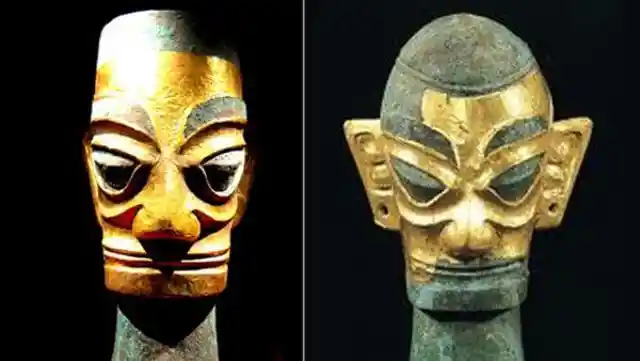
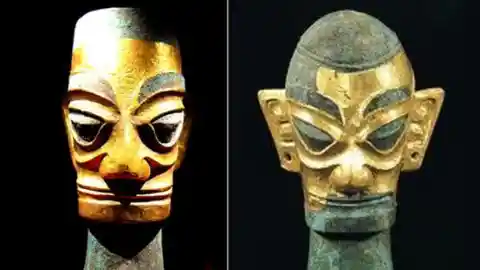
The ancient city is that of a trapezoidal shape and surrounded by wide canals that had many purposes from protection to irrigation.
Southern Mexico and Central America were home to the ancient Mayan civilization, which was one of the most advanced civilizations in history. They flourished for more than six centuries, yet it was as if they all just vanished.
9. The Khatt Shebib
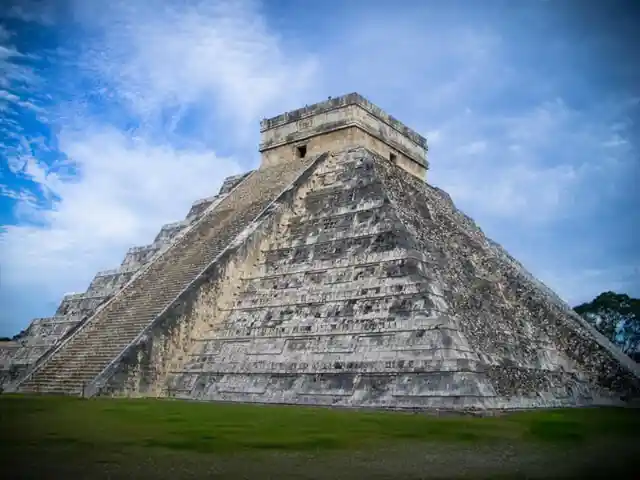
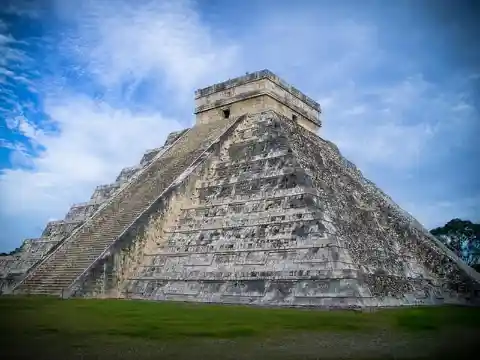
Archaeologists and scientists have tried to find out the reason for their disappearance, predicting that the combination of a drought and deforestation to expand cities, may have been to blame–according to the journal of Science in 2012.
One of the most perplexing walls ever built, the Khatt Shebib continues to puzzle archaeologists because its exact purpose is unknown. The wall is currently being studied by the Aerial Archaeology of Jordan, and it’s in a state of ruins. The confusion lies with the fact that even in its prime, the wall wasn’t more than 3.3 feet high–not exactly great for keeping out invaders.
8. Ancient Stone Circles
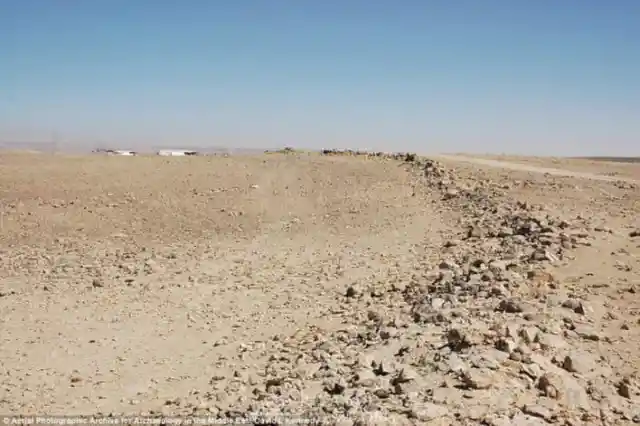
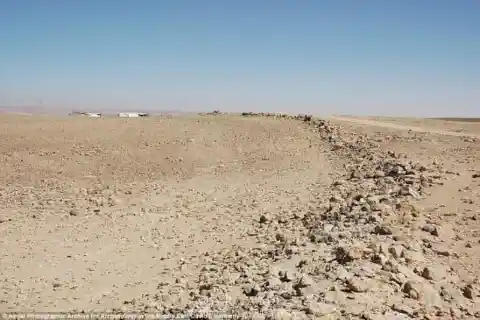
The pottery found at the site has been dated between 312 BC and 106 AD.
Once again, aerial photography has aided archaeologists in studying these massive ancient stone circles in Jordan and Syria. All of the eleven circles are massive in size, all but one reaching to be about 400 meters in diameter, suggesting to scientists that their size must have been for a specific purpose; the problem is, they’re not sure what that purpose is–according to David Kennedy a prominent researcher.
7. The Cochno Stone
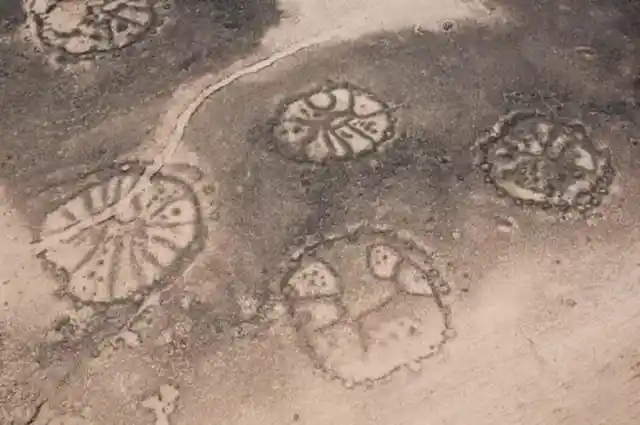
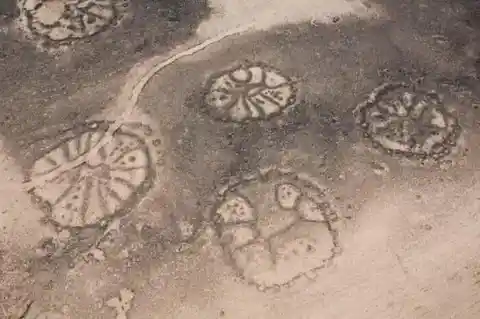
Glasgow, Scotland is home to the Cochno Stone, which is absolutely massive in size, 43 feet by 26 feet, and is one extremely unique archaeological site. The stone was unearthed in 2016 and has been dated 5,000 years old, making it an ancient wonder. The stone’s surface is covered with swirls that are known to archaeologists as ‘cups and ring marks’, according to lifescience.
6. What’s Beneath The Durrington Walls
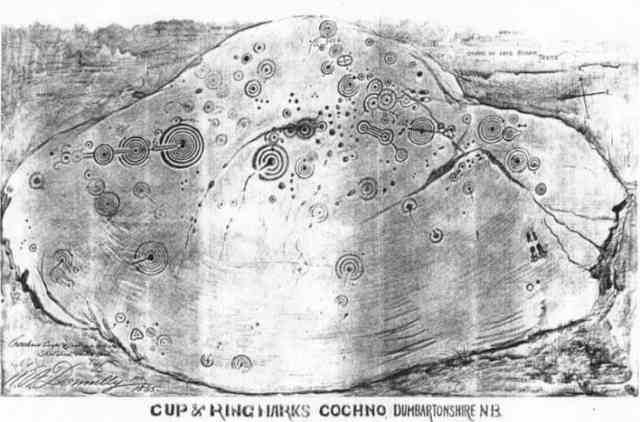
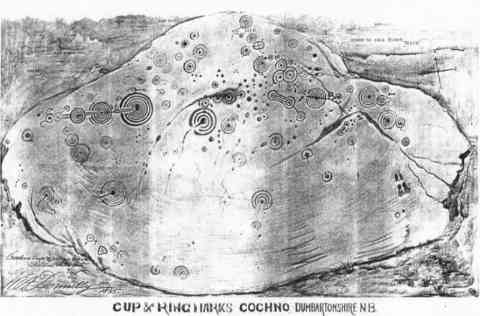
These unique symbols have been seen at other ancient sites around the world, and according to Kenny Brophy an archaeologist at Glasgow University, may have been the craft of an ancient artist.
The collection of ‘stones’ near Stonehenge were discovered in July of 2015 as scientists were using ground penetrating radar in their quest for hidden landscapes. What they actually found weren’t stones at all, but rather deep pits that once supported giant wood posts. The pits create a C-shaped arena that most likely had springs that led into the Avon river, according to CBC news.
5. Stone Structure Under The Sea
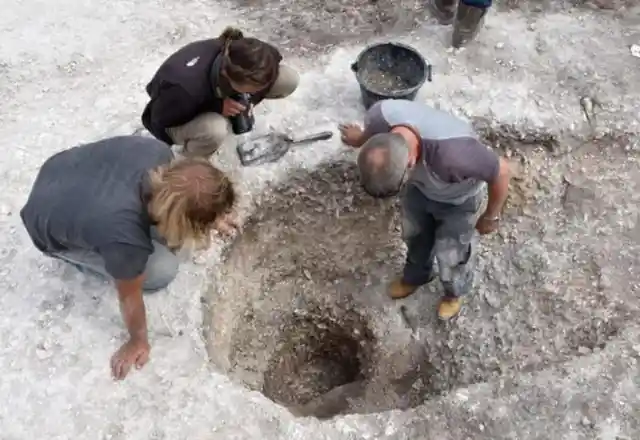
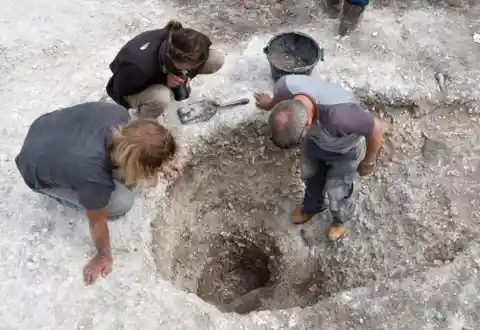
This monument is essential to understanding our ancestors because the site shows that there was a change of mind and aesthetic, as the posts were quickly removed and redone in a different way.
In 2003 researchers found one enormous stone structure hidden beneath the Sea of Galilee near Israel. The structure is known to be a cone shape that weighs more than 60,000 tons and measures in at 32 feet height and a 230-foot diameter. Underwater imaging reveals that it’s most likely a bunch of rocks stacked on top of each other.
4. The Holey Jar
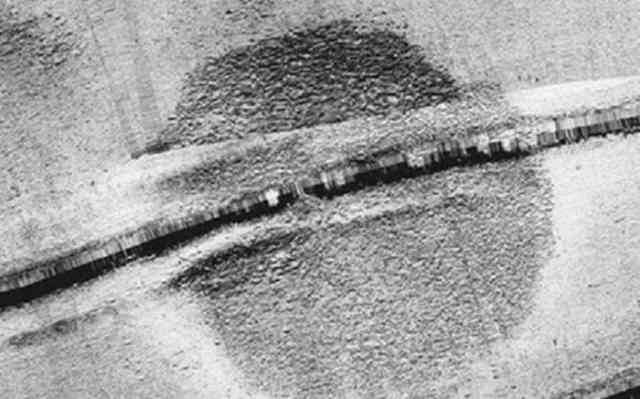
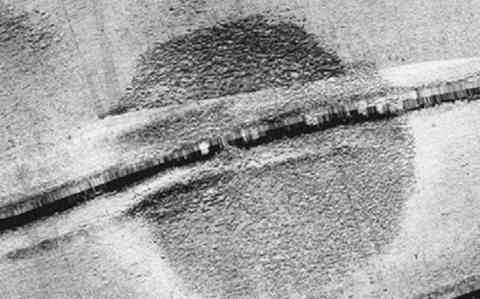
Further excavation is needed to determine more information about this gigantic structure.
There is nothing new about archaeologists discovering relics and jars of ancient times, but this specific jar was the first of its kind. This jar has holes all over it as scientists suggest its purpose may have been a lamp or an animal cage for small creatures. The jar dates back to the Roman times.
3. Ingots Found In Shipwreck
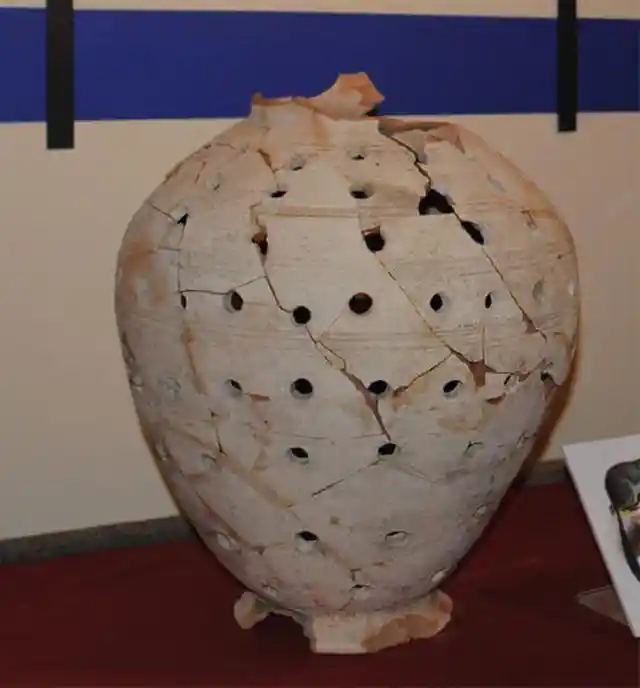
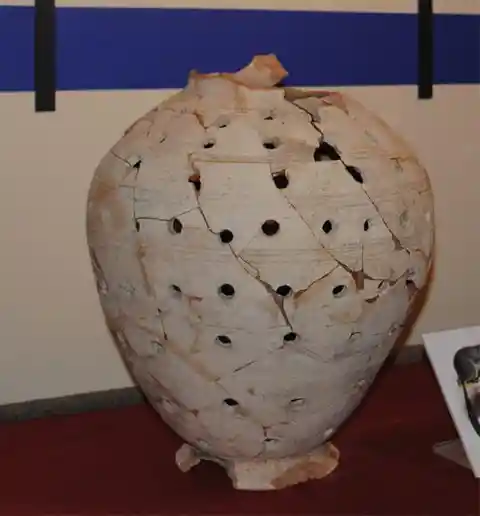
Researchers surprisingly rediscovered it in a storage facility at the Museum of Ontario. Restoring it left more mysteries than answers as there are no other known Roman artifacts like it–according to LiveScience.
In 1988 researchers found ingots, which are metal rectangles made out of orichalcum–a very rare and mysterious metal talked about in ancient texts like Pluto’s Atlantis. The 39 orichalcum ingots were found off the coast of Sicily in 1988 on a shipwreck.
2. Cryptic Code On Medieval Sword


Marine archaeologists were astonished when they realized what they had found. The mysterious metal has been written about in ancient texts as a gold-cooper alloy, and scientists today suggest its composition is made of brass alloy, according to ancientorigins.net
There is an 800-year-old mystery that the British Library has appealed to the public for help to solve. In 1825 this mysterious medieval sword was found in River Witham in England and has an uncrackable code running down the center of it. Many linguistics have tried to solve the mystery of this message to no avail and now they need help.
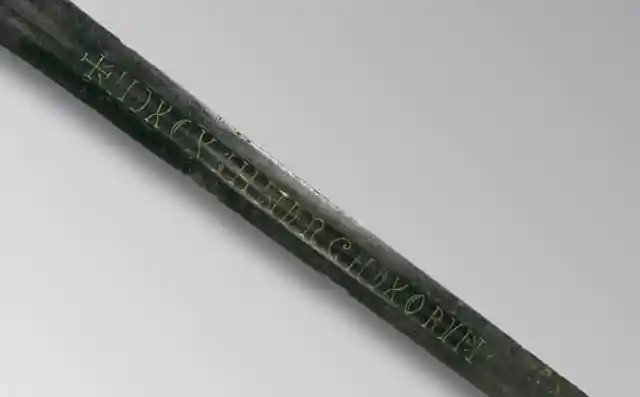
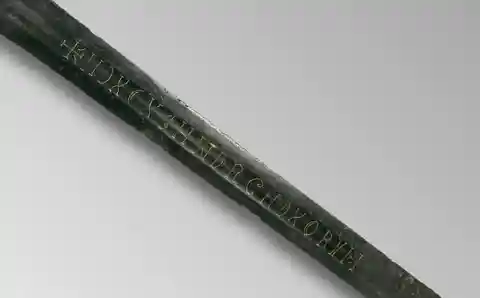
Researchers do know that the sword would have been used by a knight defending the church, and speculate it was made in Germany–says ancientorigins.